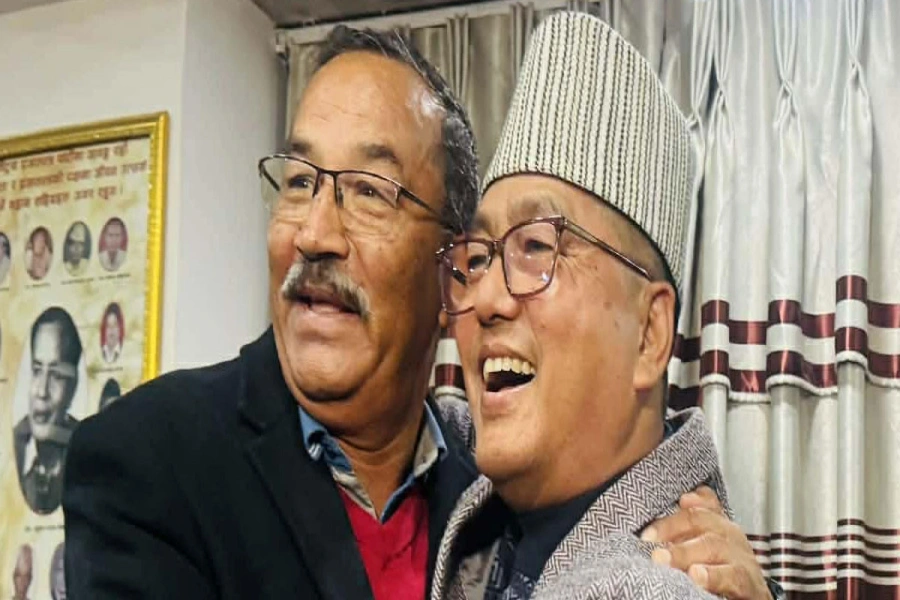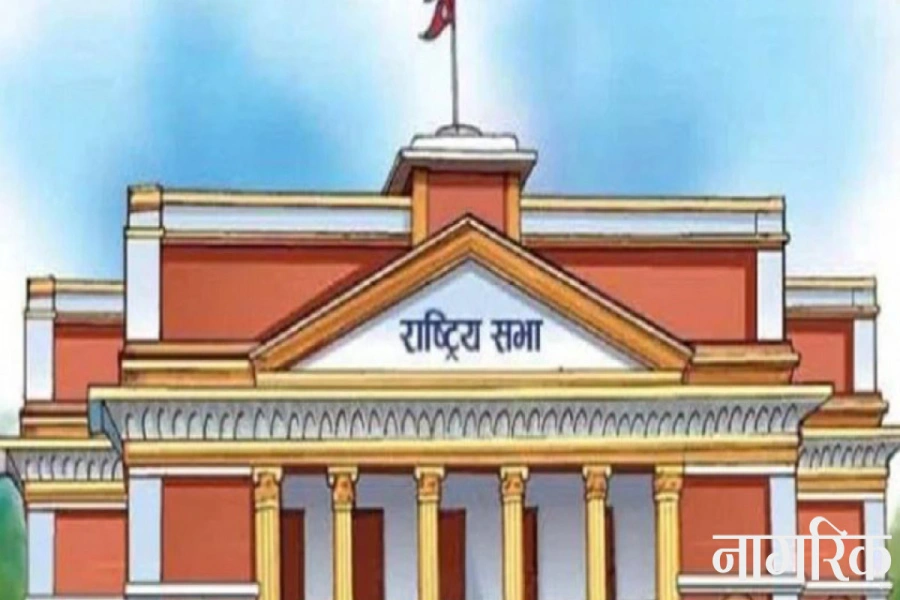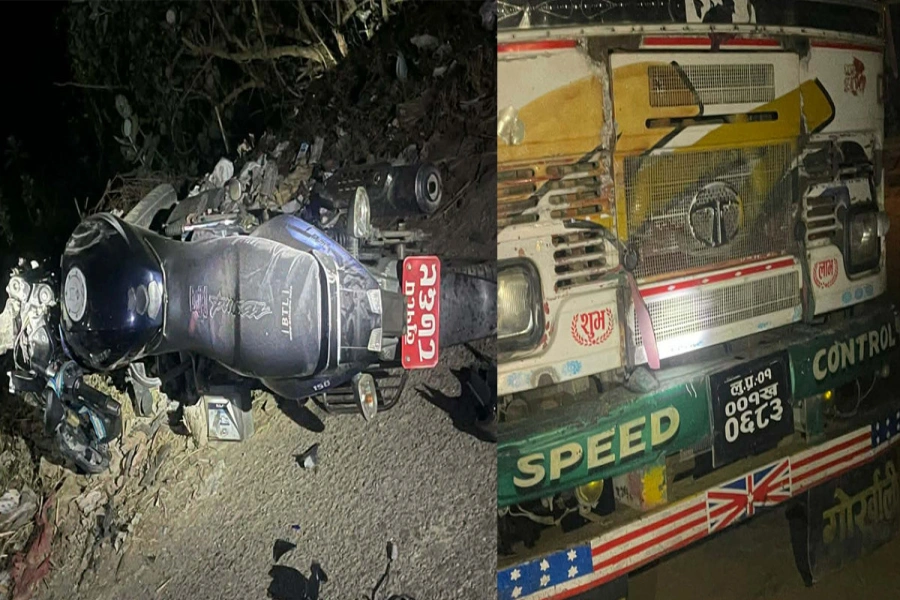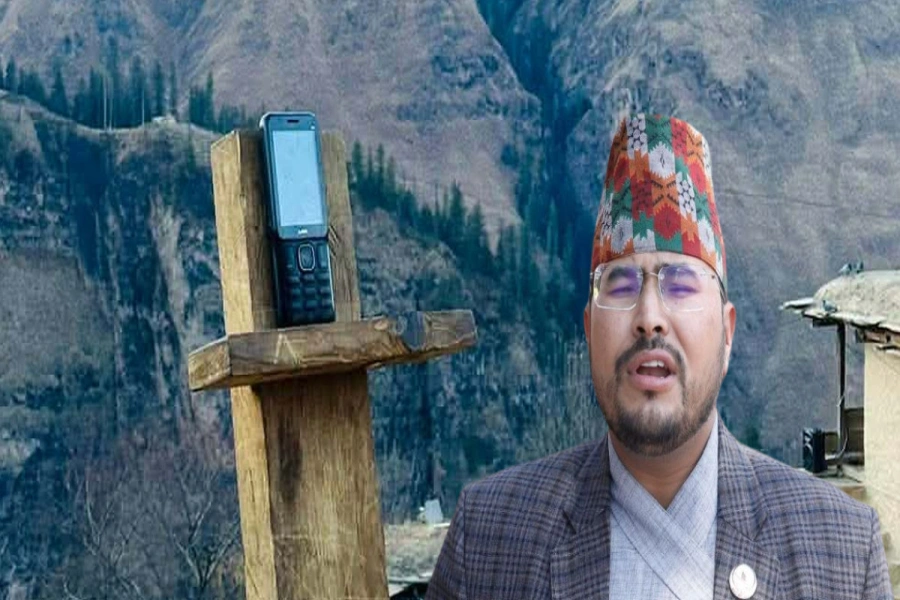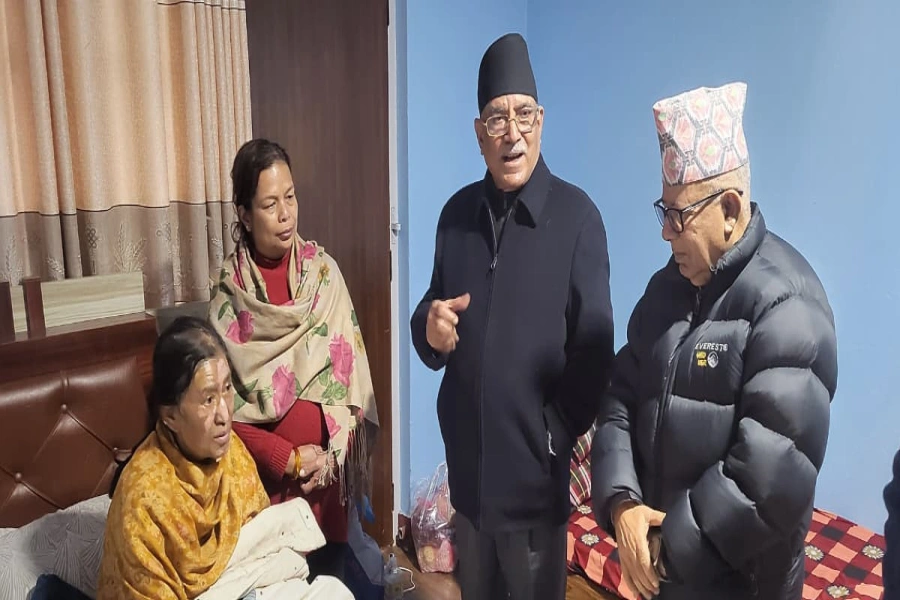DHARAN, Dec 29: It was December 23, Sunday. It was around 8 in the night. Dressed in traditional Limbu outfits, Limbu men and women were singing traditional songs, holding each other’s hands. They danced and the dance steps were beautifully synchronized. The tune to which they were dancing is called ‘Palam’. The dance performed by them is known as the ‘Dhan Nach’.
This dance is performed every year in the Cultural Festival in Dharan, organized on the occasion of Udhauli Parva. This is one of the traditional and unique dance forms in Nepal that is performed by the Limbu community. Some perform it in pairs while others dance in groups. Despite the young generation being highly influenced by modern songs, elderly people in the Limbu community are still working to preserve the authenticity of Palam and Dhan Nach.
There was a tradition of performing Dhan Nach to the rhythms of Palam song by young Limbus in the community. But, with the changing time, the downfall of the culture slowly began. New generations are not able to grasp the authenticity of dhan nach. Ambika Sambahamphe, author of ‘Charmaya Palam’ and the coordinator of Nepal Academy, Dharan stated that the tradition is not received properly by the newer generation. “People become unable to continue the tradition because of the interfere during the Maoist Insurgency,” she added.
“Dhan Nach is a type of dance specially performed by the people of Limbu community. It is also one of the ancient dance forms which need to be preserved,” said Durgamaya Limbu, Secretary and former Central Vice President of Chumlung Society, Dharan
Nava Durga Nach begins

The initiation of ‘Dhan Nach’ and ‘Palam’
The myth associated ‘Dhan Nach’ and ‘Palam’ is interesting. Legends have it that during the month of Mangsir, people gathered at a particular house. They formed a big curcile holding hands. They then went around in circlus and stepped on the paddy. This way they thrased the paddy and extracted rice grains.
Birds were attracted to the rice grains. To scare away the birds, the people shouted out loudly. The voice made a typical rhythm. Later words were added into the rhythm and hence formed the songs for Dhan Nach.
Hidden philosophy in ‘Palam’
According to Ambika Sambahamphe, the ‘Dhan Nach’ and ‘Palam’ should not be marked by Limbu people as a form of entertainment only. “As there is a deep philosophy in ‘Palam’, we should preserve it and not let it extinct”, she said. She described ‘Palam’ in four ways: ‘Bolmaya’, ‘Dilmaya’ ‘Jiumaya’, and ‘Phulmaya’. All four ways have deep meanings.
‘Bolmaya’ denoted love. The youngsters dance, ask questions to each other, seek answers, and finally get married.They are thwn united.
‘Dilmaya’ is based on the philosophy where youmg men and women believe, ‘If not in this life, we shall definitely meet in the next life.’
Young men and women dance together and get married at the end in ‘Jiumaya’ Sambahamphe said that ‘Phulmaya’ describes life as two different flowers. The flowers that are born, and the ones that grow. The flowers that take birth are Humans and the flowers that grow are forest plants (flora).Young men and women realize their emotions and love. They hence transform themselves to the flowers of their choice and thus unite.
These days, Dhan Nach and rhymes of Palam are on the verge of extinction. As youths today are much occupied in the virtual world, they hardly bother the traditions.
Housing, parks and restaurants have replaced the lands where once fairs were organized. “These rich cultures were preserved and practiced by the older generation. These cultural trends are no more in practice and may only remain in stories and history,” added Sambahamphe.
Writer and culturist, Sambahamphe Limbu asserts the need to aware, teach and train young generation on traditional Nach for culture preservation. “I feel glad to know that early attempts for the preservation is been taken at Yasok, Panchthar,” added Limbu.





